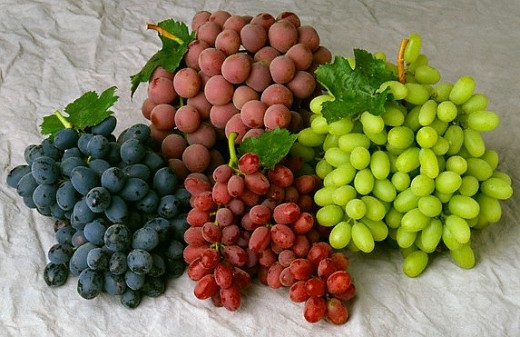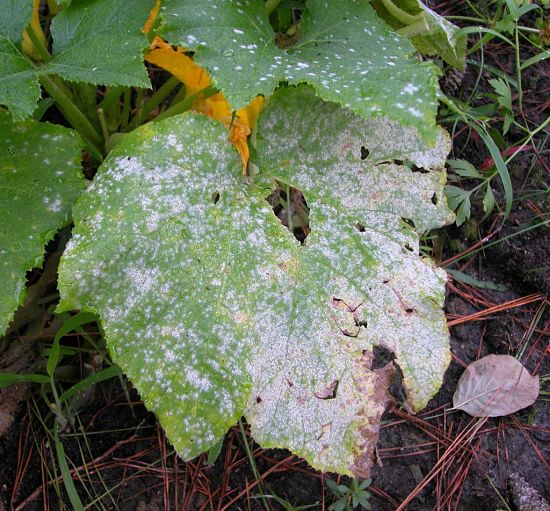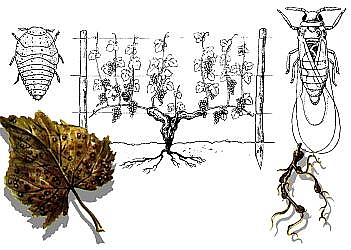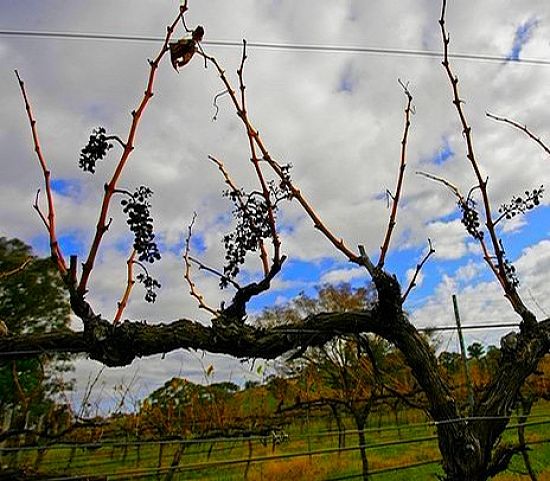New Grape Varieties Needed to Keep Wineries Thriving
There are over 10,000 documented varieties of the most common wine sub-species - Vitis vinifera (the "European" or "true" wine grapes). Of these, only about 250 are used for wine production on a commercial scale, 3 are used for sultanas and raisins and an additional hundred or so are rarely used and are confined to very small limited or local areas. Many scientists claim the future of wine-making depends on developing new varieties of grape to cope with climate change and disease. US researchers have made genome maps of more than 1,000 vine samples and these maps provide the basis for developing new varieties.
Many countries are expanding the number of varieties grown and the wine buyers become more willing to try new varieties. The Western Australian Government has recently sponsored a trial of about 20 new varieties, being planted and managed by the students at the WA College of Agriculture in Harvey. The aim is to find varieties that are better suited to warmer clients. The grapes being planted include varieties from southern Europe that are better suited to warmer Mediterranean type of climates.
Old World varieties for a New World






These include varieties from various countries:
- France: Durif, Tannat, Lagrein, Savagnin blanc, Pinot Gris, Fer and Alicante Bouschet
- Italy: Fiano, Dolcetto, Arneis, Brachetto, Fiano, Dolcetto and Pignoletto
- Sardinia: Vermentino
- Hungary; Harslevelu and Kadarka
- Corsica: Sciacarello
- Spain: Graciano
- Georgia: Saperavi
- Germany: Scheurebe
- French-American: Chambourcin
The information about grapevines - their performance, yield and management issues gathered from this trial will also be applicable to similar warmer climate grape growing areas in WA, such as the Peel, Swan Valley, Gingin and Geographe Regions in Western Australia and in the Eastern States
Developing New Varieties
Researchers are trying to develop completely new varieties using the new knowledge of the grape genome. Diseases such as Powdery Mildew, which evolved in North America, is a constant issue for growers; but new regulations are likely to curb the use of chemical treatments. The movement of vine stock between countries also poses a risk.
In the late 1800s a root louse, Phylloxera vastatrix completely devastated most vineyards throughout the world. The root louse attacks the vine roots and leaves, kiling the vine. Phylloxera is indigenous to the Mississippi River Valley in America and local endemic species were resistant to the louse.
Phylloxera was introduced to Europe when avid English botanists collected specimens of American vines in the 1850s and planted them in Britain. The epidemic destroyed vineyards in Britain, France and most of the European wine growing industry. In France, the total wine production fell 75% from 1875, before the infection to 1889 after it.
About 70% of all European vineyards were destroyed. Over the next 20 years, it decimated nearly all the vineyards of Europe, and many in Australia and other countries. The only solution was to grafting every wine vine in Europe onto American rootstocks.
One tragic consequence of the Phylloxera devastation is that many of the indigenous native species in Europe, which were not of commercial value, were not grafted and became extinct.
US researchers have now completed genome maps of more than 1,000 vine samples, which paves the way to develop new disease-resistant grape varieties.
Most of the common grape varieties used for making wine such as merlot, chardonnay, semillon, riesling have developed from a single species, Vitis vinifera vinifera, that was probably domesticated about 5,000 years ago, in parts of what is now Turkey.
Vinifera has been honed into hundreds of varieties, red and white; but the grapes are all still members of the same species, with limited cross-breeding between different varieties. This means that most varieties are prone to the same diseases.
Vinifera grapes have no natural resistance; and in Australia alone, dealing with Powdery mildew costs an estimated $100m per year, largely through the fungicidal chemicals that are used to protect vines.
Seventy percent of fungicides used in US agriculture are sprayed in vineyards
and powdery mildew fungus is one of a number of major grape diseases. But chemical use is highly restricted throughout the world and new varieties may be the answer.
Conventional cross-breeding to produce new varieties is costly and laborious for grapes. Plants have to be grown for 3 or 4 until they fruit and produce grape. Then the grapes have to be harvested and wine made, tasted and judged before growers know whether the new variety is viable.
It is a risky business because there is no guarantee that people will adopted the new variety even if it passes all the tests.
The research team has produced a genomic maps of more than 1,000 samples, and identified link the location of genetic "markers" to a variety of traits such as sugar content, acidity and or disease resistance. Knowing the genetic markers for these traits, you can select individual vines that have variants of the key markers and select these for growing and testing. This will save an enormous amount of time and money.
Risks from climate change
Around the world, growing numbers of winemakers believe that climate change is a risk to present and future production. Pinot Noir is already experiencing difficulties in ist traditional growing areas. Grapevines are much more sensitive to temperature than other crops such as wheat or rice. The growth rate and quality of the grape can be affected, says Greg Jones, a winemaker and researcher at Southern Oregon University.
In Spain, the makers of sparkling Cava in Penedes have struggled to control acidity and alcohol levels, that have changed recently and also to retain nitrogen levels crucial to the wine's fizzy taste and quality. Meanwhile, about 300 km to the west, the neighbouring area of Rioja has produced a string of fine vintages that were the best on record. While some wines are thriving in warmer conditions, their long-term future is uncertain and the suitability of various regions is changing. The slight increase in average temperatures appears to have benefited some of the areas of Rioja.
In Germany, some winemakers are also starting to see long-term effects of higher temperatures. The vines grow faster but lose quality. Growers are also worried about increased frequency of severity of storms and disease prevalence.
It is France that has the most to lose because of its appellation system which restricts what varieties can be grown where. The industry employs around 200,000 people.
Growers in Burgundy have noticed that the date of harvest is getting earlier and earlier, with excess sugar and acidity defects. A great Burgundy estate can not simply pack up and move 200 kilometres to the north, or replace its cool climate Pinot Noir grapes with warmth-loving varieties such as Tempranillo.
In Australia, winemakers have adapted production to cater for increased heat and droughts using overhead sprinklers at night to give the grapes some respite from the heat. If temperatures continue to rise and droughts persist, production could be moved to cooler, more southerly areas, such as Victoria and Tasmania.
But this latitude shift or adapted management is not an option in many of the classic regions of Europe.
New Better Varieties or Variants, Offers Hope and Great Potential for the Wine Industry
Some of the more common wine varieties are shown below.
For detailed information of Australian Wineries and to search by name, location and variety grown see - Findawinery.com
Common White Wine Varieties

Common Red Wine Varieties
